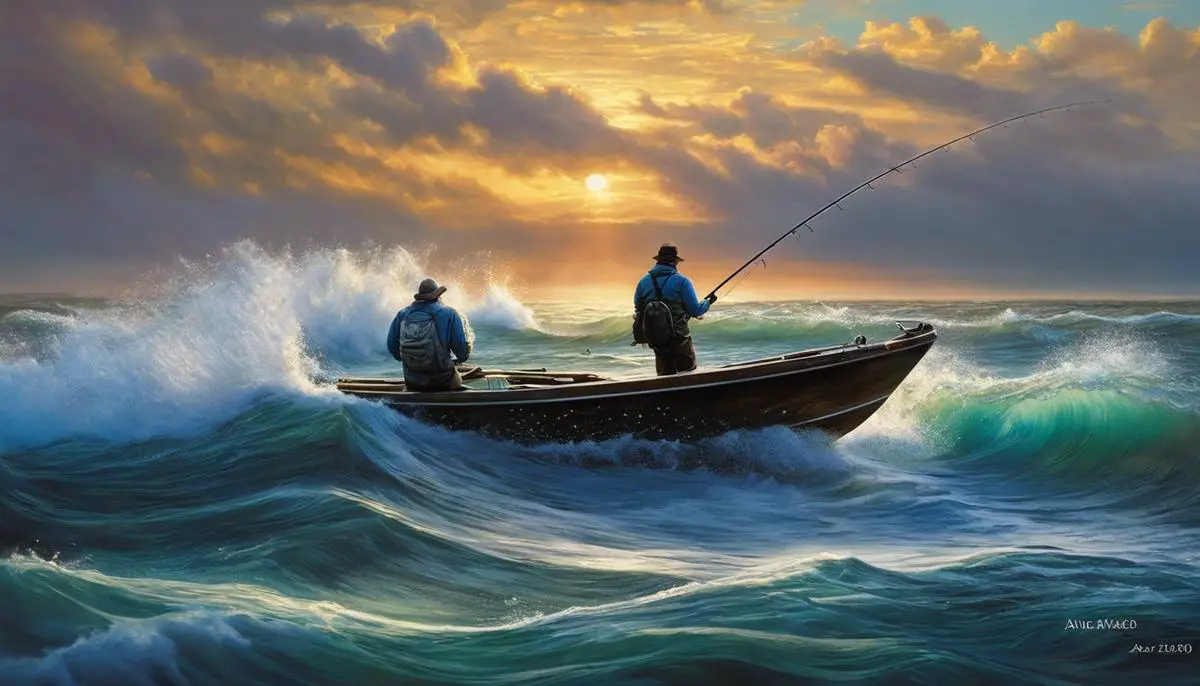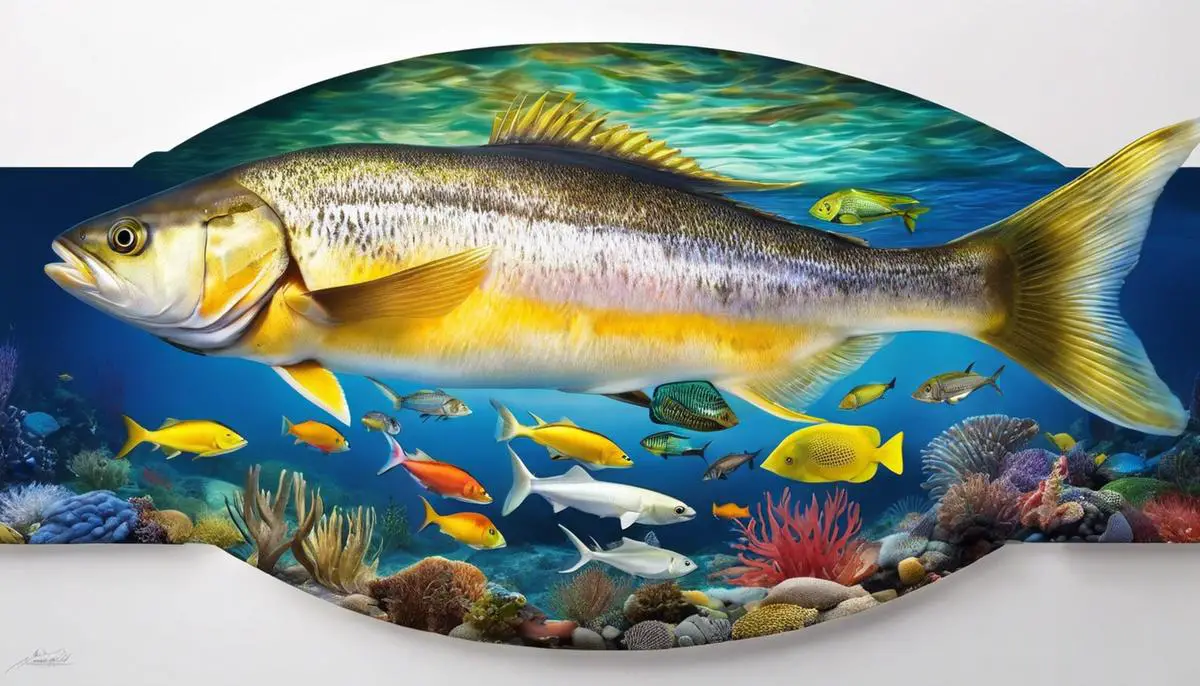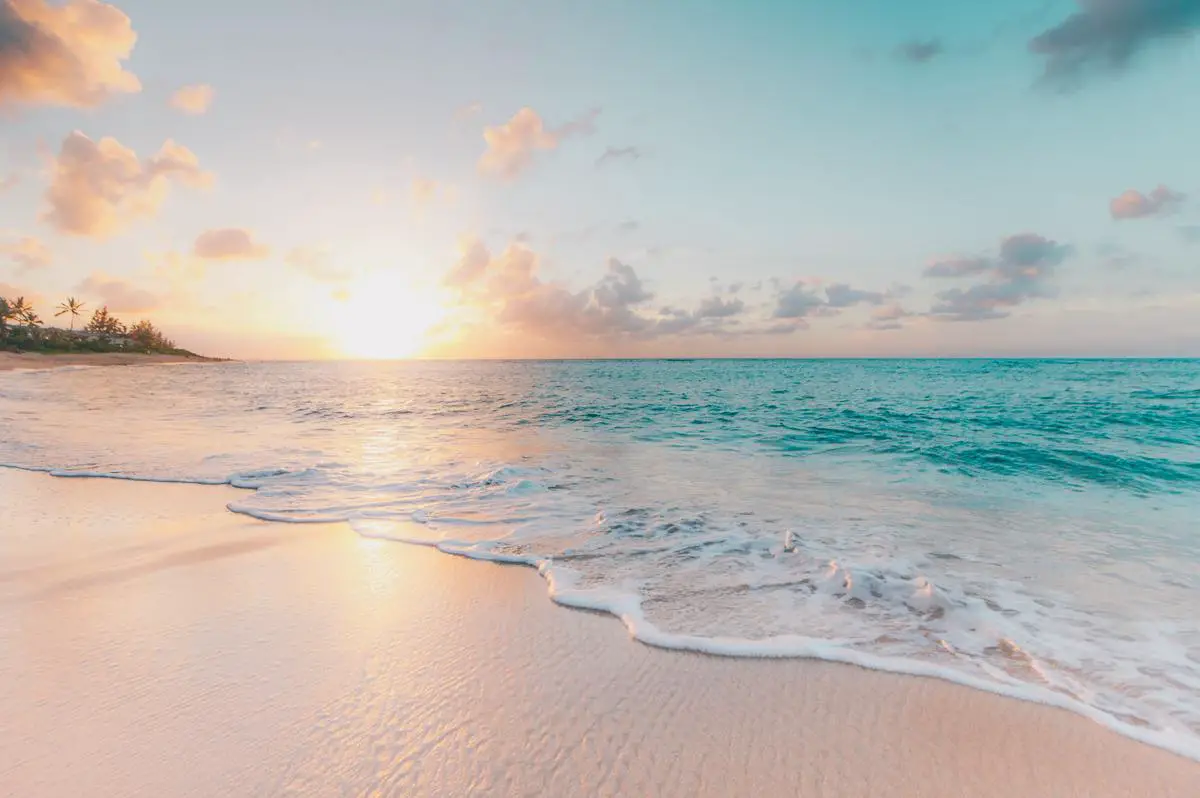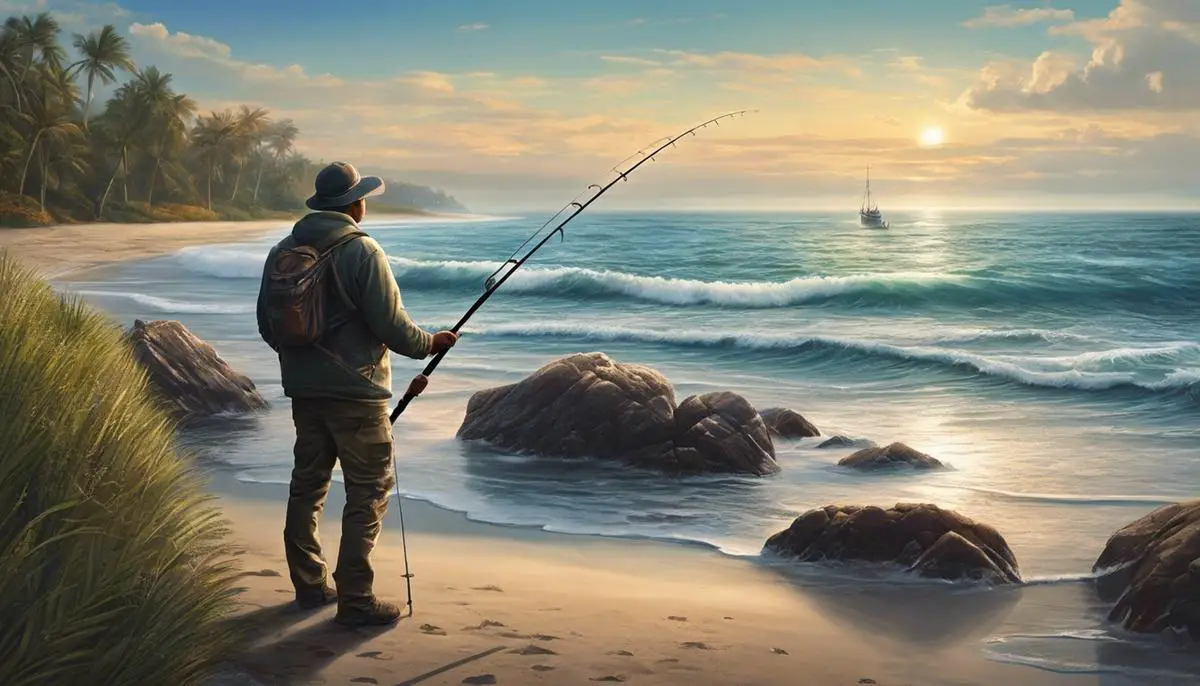Embarking on an inshore saltwater fishing trip involves much more than just casting a line off a pier and awaiting the tug of a bite. It’s an activity that requires a good understanding of a range of factors, from the influence of tidal movements on the behavior of your target species to the intricacies of gear selection and bait choices. Innovations in the world of fishing and marine biology have provided key insights into how fish species in inshore saltwater environments react to tides, highlighting that comprehensive knowledge of this dynamic can significantly boost your success rates. Equipping yourself with these details, alongside specifics on the habits of the fish you’re angling to catch and the right gear to use, will undoubtedly set you up for an incredibly rewarding inshore fishing adventure.
Understanding Tides
Riding the Tides: The Secret to Saltwater Fishing Success
Saltwater fishing is an exhilarating pursuit that requires a solid grasp of many factors, from understanding fish behavior to identifying prominent fishing spots. However, one aspect that repeatedly emerges as a pivotal determinant of effectiveness in this hobby is the rhythmic flow of the ocean – the tide.
Understanding tides’ influence on fish behavior significantly improves a saltwater angler’s chances of succeeding. It’s like having a fish-finding formula! But how exactly does it work? Let’s dive into this!
The Tidal Flow-Feeding Connection
Nature is all about rhythm and cycles. The tide is no different. Fish, being creatures of habit, are remarkably attuned to this flow in their quest for food. High tides often equate to feeding times as the rising water levels bring smaller organisms (fish food) closer to the shore or into bays and estuaries. Hence, the bigger species that anglers love to catch come closer in pursuit of these meals, making these feeding frenzies an excellent opportunity for saltwater fishing.
Mapping Out the Best Fishing Spots
An understanding of tidal patterns can also help an angler map out the most productive fishing spots. For instance, during outgoing tides, currents can create distinct spots like drop-offs or points where the water flow slightly changes. These spots are often magnets for schools of fish since the current tends to carry smaller, easier to catch prey right into their waiting mouths.
Timing it Right
Knowing the ebb and flow of tides also lets an angler target specific windows of time that make for the best fishing conditions. The transitional periods during change of tide, i.e., two hours before or after high tide or low tide, are often premium times for saltwater fishing.
Season’s Ebb and Flow
The correlation between fish behavior and the tide isn’t the only cyclical relationship saltwater anglers have to consider. Seasonal changes, too, influence tidal patterns significantly. For instance, in winter, low tides are lower than usual, and high tides are not as high. On the other hand, during spring and early summer, the highs are higher, and the lows are less extreme. Capitalizing on these changes greatly enhances chances of reeling in the big one!
Trying to correlate tide timings, fish behavior, and fishing effectiveness can undoubtedly seem complex initially, but patience and practice make it almost an intuitive process. So, the next time there’s a fishing expedition planned, make sure to consult the local tide charts. For, understanding tides might well be that missing piece in the grand puzzle of saltwater fishing success! Saltwater fishing is as deep as the ocean itself – every time out on the water has the potential to teach something new about this wonderful world whirls. Harness its rhythmic flow and prepare for fishing fun like never before!

Fish Species and Habitats
Saltwater Inshore Fishing: Common Fish Species and their Habitats
Visiting the coast: waves gently lapping against the shore, seagulls squawking overhead, and the thrill of the chase. Saltwater inshore fishing encompasses an in-depth understanding of marine wildlife and their unique habitats. To increase the probability of a successful catch, anglers need to recognize the common species found along the shoreline.
Red Drum, also known as Redfish, are popular inshore species. These striking, coppery-shaded fish inhabit overgrown grass flats, oyster bars, and bottom structures such as rock piles or shipwrecks. They are particularly active during the early morning and late evening.
Another common catch is the Spotted Seatrout. They are fond of shallow, grassy areas, particularly during warmer weather. In contrast, during the colder months, you might find them in deeper channels. Spotted Seatrout are drawn to areas with a moderate current that offers abundant food supply.
Flounders are predatory flatfish that camouflage perfectly into sandy or muddy bottoms where they ambush their prey. Look for these masters of disguise near structure like oyster beds, bridge pilings, and near river mouths where freshwater meets saltwater.
Next, we have the Tarpon. These fascinating sportfish are typically found in warmer tropical waters. Known for acrobatic leaps when hooked, they are most commonly spotted in coastal waters, bays, estuaries, and mangrove-lined lagoons.
Snook, similar to the Tarpon, favor warmer waters and thrive in coastal areas around mangroves, sea walls, and pilings. This species can tolerate freshwater and will travel up coastal rivers.
Lastly, Sheepshead fish enjoy congregating around hard structures. Bridges, piers, jetties, and even old crab traps are likely areas to find these creatures. They have a unique set of teeth used to pry open their favorite foods – barnacles, and crustaceans.
The habitats of these fish species reflect their survival strategies, food sources, and predator avoidance tactics. The beauty of saltwater inshore fishing lies not just in the thrill of the catch, but in understanding the intricate ecosystem that exists below the surface. Deepening knowledge about various fish species and their respective habitats not only elevates the fishing experience but also fosters greater respect and care for our marine world.

Equipment and Bait Selection
Having thoroughly examined the fish species and their habitats, along with the influence of tides, it’s time to dive into the significant aspect of inshore saltwater fishing – choosing the right equipment and bait.
Choosing the right fishing rod is like selecting a golf club; the selection depends on the task at hand. For inshore saltwater fishing, typically, a medium-light power, fast action, 7 to 7.5 feet spinning rod works really well. A spinning reel, paired up with the rod, offers great versatility and easy casting. It’s suggested to look for reels with high line capacity and smooth drag. Also, be prepared to rinse and clean your reel after each use as saltwater can be harsh on your gear.
Now, let’s talk about fishing line, which forms an essential link between you and the fish. A braided line is often suitable for inshore fishing as it offers great strength, less stretch, and superior sensitivity. A popular choice is 10 to 20 lb test braided line. Combine this with a 20 to 30 lb test fluorocarbon leader for best results – fluorocarbon is virtually invisible underwater and can give you an edge when the water is clear and the fish are skittish.
Next up is the fishing hook. Circle hooks are highly recommended for their eco-friendly nature, as they typically hook a fish in the corner of its mouth, reducing the gut hooking and ensuring safe release. Keep various size circle hooks at your disposal, but sizes 1/0 to 4/0 are commonly used in inshore saltwater fishing.
Choosing the right bait for inshore fishing hinges upon the prevalent fish species and their feeding habits. It’s usually seen that most inshore saltwater fish prefer live or natural bait, such as live shrimp, mullet, menhaden, or fiddler crabs. But don’t forget to keep a set of artificial lures handy. Soft plastic lures, topwater plugs, or spinning baits can often come in handy in different situations.
A cast net is another valuable addition to your fishing arsenal. It serves great to catch live bait frequently seen in the fishing grounds. Some experience might be required to use it perfectly, but once mastered, it can be a game-changer.
A vital part of every fishing trip is the tackle box. Stock the tackle box adequately but keep it light. Apart from the hooks and weights, include a fillet knife, spare line, an extra reel, needle-nosed pliers for hook removal, and a first-aid kit for safety.
Last but not least, never underestimate the power of local knowledge. Don’t hesitate to take a few tips from seasoned local anglers or bait shop owners about what’s biting and what they’re biting on.
Remember, inshore saltwater fishing is not only about casting the line and waiting for a fish to bite. It’s about understanding the fish, their habitats, the equipment, and most importantly, developing patience and skills. So, get out there, try some new gear, experiment with different baits, and enjoy what Mother Nature has to offer. Happy fishing!

With a solid understanding of tides, a familiarity with the various fish species you could encounter, and knowledge of the right equipment and bait to use, your inshore saltwater fishing trips can offer an unmatched sense of accomplishment. It’s more than just the joy of casting a line and catching a fish—it’s about truly immersing yourself in the fishing process, leveraging your informed decisions to align with the activity patterns of your target species, and becoming attuned to the ebb and flow of the tides. Master these facets of inshore saltwater fishing, and you’re bound to experience an array of thrilling fishing challenges that not only sharpen your angling skills but also deepen your connection and respect for our vibrant marine world.



Welcome to our blog!